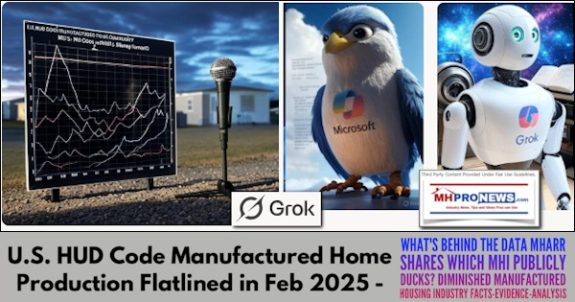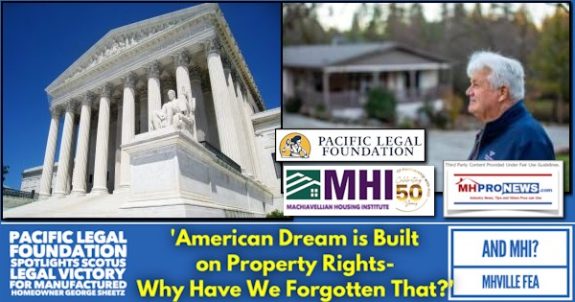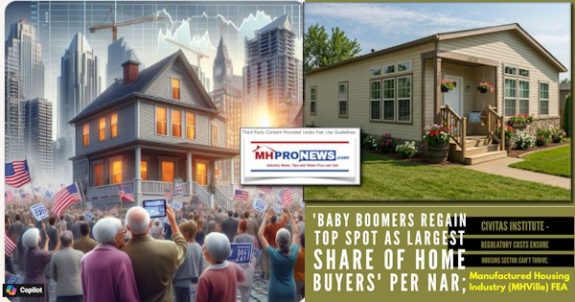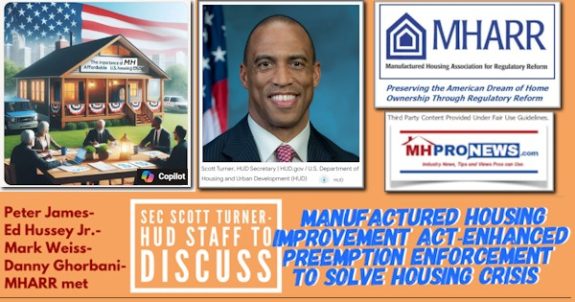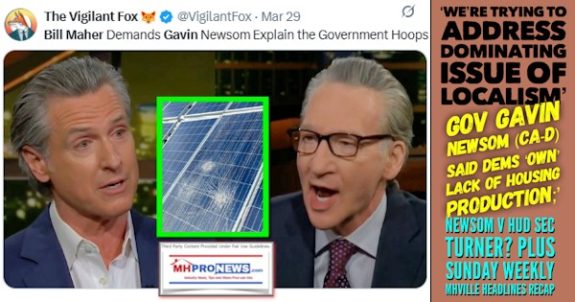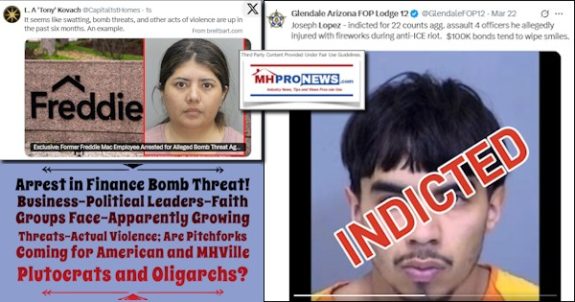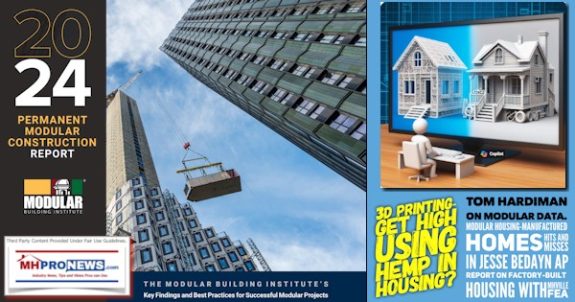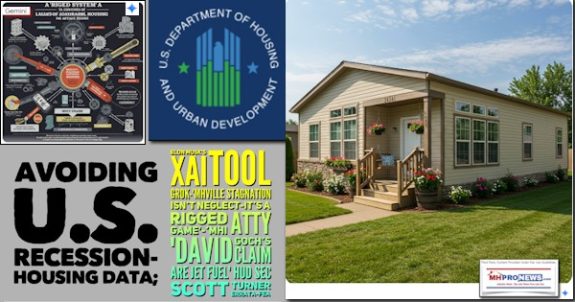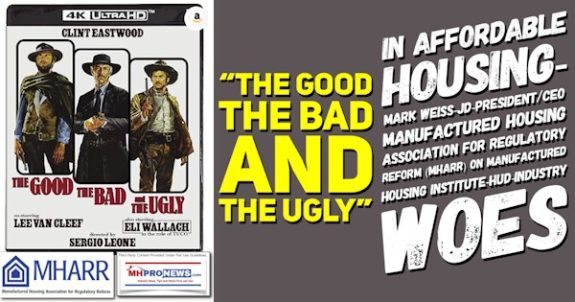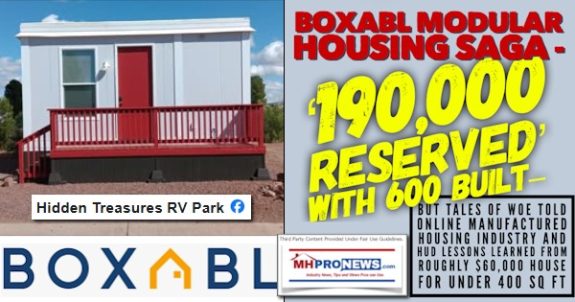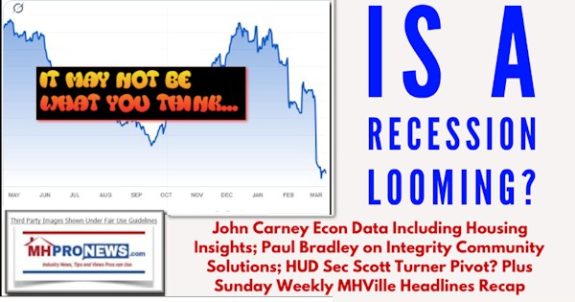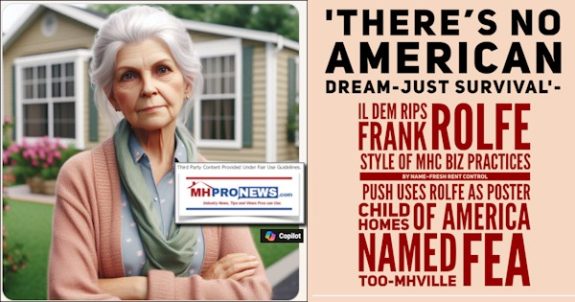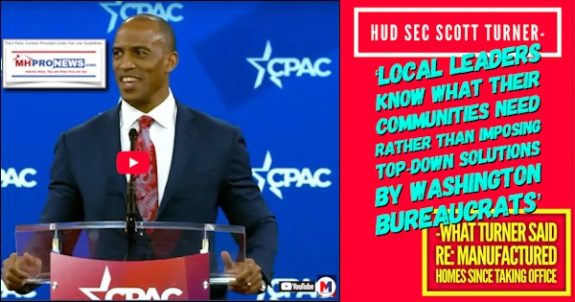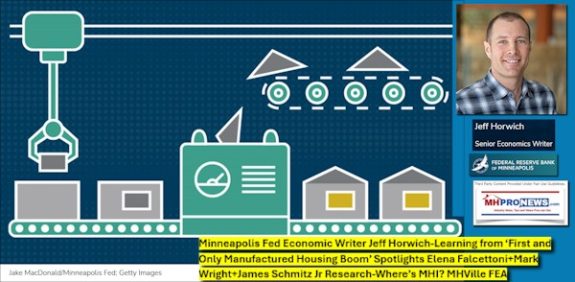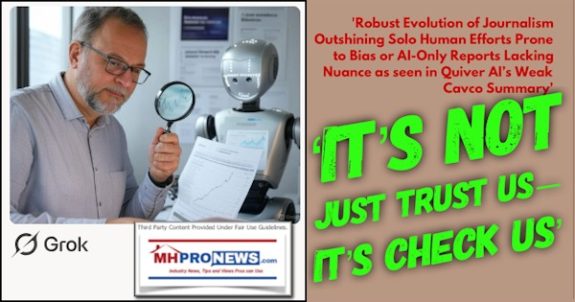I. MEETING OVERVIEW AND ANALYSIS
The cumulative impact of years of mismanagement of the HUD manufactured housing program under its prior leadership was on full display as the Manufactured Housing Consensus Committee (MHCC) met on April 28-30, 2010 in Tulsa, Oklahoma. Building on a series of actions initiated and advanced by HUD during the past several years, the role, authority, functionality and independence of the MHCC has, for now, been replaced by de facto HUD domination, in both procedure and substance. These actions, designed to effectively transform the MHCC into a rubber stamp for the HUD program — similar to the former National Manufactured Housing Advisory Council disbanded by Congress as part of the Manufactured Housing Improvement Act of 2000 and replaced with the MHCC — culminated at the Tulsa meeting
This degradation of the MHCC is — and should be — unacceptable to all federal program stakeholders including, most particularly, the industry and consumers. The MHCC, together with the appointment of a non-career manufactured housing program Administrator, is the centerpiece reform of the 2000 reform law, designed by Congress to assure the availability of affordable, non-subsidized manufactured housing for millions of Americans and complete the transformation of the HUD program from a “trailer” program to a legitimate housing program. Consequently, program stakeholders — and most especially the industry and consumers — now have the task of working closely with senior HUD officials and the new management of the federal program in order to halt and reverse the deterioration of the MHCC. MHARR is committed to working with all HUD Code manufacturers, retailers and communities to advance this objective and correct the draconian measures that HUD has put in place.
As to the specifics of the degradation of the MHCC, the following actions were on display at the Tulsa meeting:
1. Severe Restrictions on the Role and Authority of the MHCC: HUD, through a February 5, 2010 “Interpretive Rule” issued by the former program management without opportunity for public comment, has stripped the MHCC of much of its statutory role and authority by placing off-limits from MHCC review and comment a myriad of Agency interpretations and decisions affecting the standards and their enforcement that directly impact the industry and consumers. By reading “catchall” section 604(b)(6) out of the law, a provision designed by Congress to ensure that HUD would bring most standards and regulatory matters to the MHCC (see below), the stage is now set for HUD to bypass the MHCC on major initiatives — and particularly unnecessary and unnecessarily costly regulatory initiatives – as it has already done with its “voluntary”/”not optional” in-plant inspection changes.
2. Exclusion and Censorship of Collective Industry Representatives: With no collective industry voting representative on the MHCC, industry organization personnel were barred from posing questions or raising points during Committee debate by a ruling of the HUD program Deputy Administrator, serving as the designated HUD liaison (i.e., Designated Federal Official/DFO) at the meeting. Under this ruling, industry organizations can only address the Committee during an extremely brief pre-determined period reserved for comments by members of the public. This censorship allows HUD to place its views and opinions before the Committee while effectively silencing other collective viewpoints and perspectives. It is a disservice, moreover, to the industry businesses that have pooled their limited resources in order to establish and maintain a collective representation with the institutional knowledge, memory, track record, knowhow and historical depth on crucial industry issues in connection with a complex program such as this, that members of the Committee cannot reasonably be expected to possess as individuals.
3. HUD Control of MHCC Agenda: HUD has taken complete control of the agenda for all MHCC meetings. HUD itself can thus determine which matters and proposals will be brought before the MHCC and what subjects can even be discussed by the Committee.
4. HUD Control of MHCC Schedule and Update Cycle: HUD has taken control of the prioritization of proposals before the Committee. Previously, the MHCC itself decided how to prioritize proposals received from HUD, or the public, or initiated by the MHCC or any of its members, as part of its two-year code update cycle. With the January 2010 HUD revision of the MHCC bylaws, however, HUD has now given itself the power to decide when, how and which proposals will come before the MHCC. Combined with HUD control over the MHCC agenda, this gives the Department the ability to rapidly advance its own proposals and others that it favors, while it can delay or simply ignore proposals – or entire subject areas — that it does not favor or does not wish to address.
5. HUD Control of MHCC Subcommittees: With its changes to the MHCC bylaws, HUD has taken control of the membership of MHCC subcommittees. Since it was established, the MHCC has allowed interested non-MHCC members to participate in – and vote as – members of its various subcommittees, where much of the Committee’s actual work is accomplished. HUD, however, has now given itself veto power over the appointment of individual subcommittee members. This will allow HUD to skew subcommittee membership to particular members and viewpoints that it favors.
6. HUD Control of Subcommittee Referrals: HUD has taken over the assignment of proposed revisions of the standards and enforcement regulations to specific MHCC subcommittees. HUD will now dictate which MHCC subcommittee will process each of the proposals that HUD selects to appear on the MHCC agenda. Proposals can thus be strategically directed to the subcommittee (and subcommittee membership) that HUD prefers.
7. Manipulation of MHCC Appointments: Politically-motivated appointments to the MHCC during the past several years have skewed the balance of the Committee with special interest advocates who do not appear to share the broader interest of mainstream manufactured housing consumers in affordably-priced, non-subsidized home-ownership.
8. Mischaracterization of the Role and Authority of the MHCC: HUD declared at the Tulsa meeting that the only role of the MHCC as an “advisory committee” is to respond to specific HUD proposals. This directly contradicts and skews the 2000 reform law – which authorizes the MHCC to develop its own proposed standards, regulations and interpretations – and represents another effort by HUD to undermine and mischaracterize the role, authority, functionality and independence of the MHCC.
9. Mischaracterization of GSA “Requirements”/”Guidelines”: After attempting to justify HUD domination of the MHCC to “requirements” of the General Services Administration (GSA) – which is generally responsible for federal advisory committees under the Federal Advisory Committee Act (FACA) — the HUD DFO later acknowledged that certain points had been “overstated,” and that GSA “requirements” are, in fact, only “guidelines.” Nevertheless, none of the negative rulings of the HUD DFO were retracted. All of these actions have left members of the MHCC, and especially more experienced members, justifiably disaffected and dismayed by the manipulation of the Committee and its procedures. Moreover, as expected and predicted by MHARR, now that the program has consummated these steps to dominate the MHCC and undermine its independence, HUD has announced that – after an extended period of conducting just one in-person MHCC meeting each year – it expects to hold a second in-person MHCC meeting in 2010, most likely in November, and that a significant number of initiatives will be moving forward. Consequently, now that HUD has degraded the role, authority, functionality and independence of the MHCC and has stacked the Committee against the industry and mainstream consumers, it will attempt to force as many costly and damaging proposals through the MHCC as possible. In addition, HUD indicated that proposed rules will be published in rapid sequence this Summer on a number of major pending matters, some of which do not even have the consensus approval of the MHCC.
II. MHARR PUBLIC PRESENTATION TO THE MHCC
Despite the severe limitations placed by the HUD program on its ability to present relevant information to the MHCC during Committee debates, MHARR’s representative was able to address the Committee during the short time allotted for public testimony and provided the MHCC with MHARR position papers regarding three key issues — HUD’s proposed rule for fire sprinklers, HUD’s February 5, 2010 Interpretive Rule that eliminates a substantial part of the role, authority and functionality of the MHCC, and HUD’s January 2010 revisions to the MHCC bylaws that give the Department veto power over the composition of the MHCC subcommittees. Copies of these MHARR position papers are attached.
As those documents explain in greater detail, and as stated by MHARR in its public testimony, MHARR opposes the HUD-proposed federal fire sprinkler standard on multiple grounds and is urging the MHCC to reject that proposal. By contrast, a representative of the other half of the industry in Washington, D.C. advised the Committee of the support of that portion of the industry, in principle, for a federal sprinkler standard, subject to certain unspecified language changes. Thus, there is a difference of opinion within the industry on this important issue, which is based mostly on a misinformation campaign mounted by sprinkler proponents. To address this, MHARR is working with key industry members to advise them of the relevant facts and concerns related to this issue, in order to promote a unified industry position on this critical matter to the greatest extent possible.
Similarly, MHARR addressed the factual details of HUD’s action to further diminish the role, authority, functionality and independence of the MHCC by reading the crucial “catchall” section 604(b)(6) out of the 2000 reform law. That provision states, in relevant part:
“Any statement of policies, practices, or procedures relating to construction and safety standards, regulations, inspections, monitoring, or other enforcement activities that constitutes a statement of general or particular applicability to implement, interpret, or prescribe law or policy by the Secretary is subject to [the MHCC procedures of) subsection (a). . .. Any change adopted in violation of subsection (a) or this subsection is void.”
HUD’s interpretation of this section, which effectively renders it meaningless, is an unacceptable alteration of the law that should be corrected, even if congressional intervention is required.
III. COMMITTEE ACTIONS
1. Department of Energy (DOE) Presentation: Although a DOE official was scheduled to deliver a presentation on the manufactured housing energy conservation rule being developed by that agency, the official did not appear and a presentation was given instead by an employee of the Pacific Northwest Laboratories, a DOE contractor. The speaker provided no substantive information on the standards being developed, noting that he had been instructed not to address any such specifics by DOE attorneys. According to the presentation, however, DOE received ten sets of comments – including those filed by MHARR – in response to its February 22, 2010 Advance Notice of Proposed Rulemaking (ANPR) on the energy rule, and is still seeking specific information, including purchase price and life-cycle cost impact from interested parties, including the industry. The speaker indicated that DOE hopes to issue a Notice of Proposed Rulemaking (NPR), including the text of a proposed rule by the end of 2010, and a final rule by December 201 1, with a subsequent phase-in timeline for industry compliance.
With this information – or lack thereof – from DOE, MHARR, which has been seeking and compiling accurate information from industry members (particularly manufacturers) for some time on this important and potentially very costly matter, is nearly ready to publicize its view and position and will take action to do so soon.
2. Consideration of HUD Proposals: With only several days lead time, HUD presented five significant proposed rules to the MHCC. While HUD did not declare these rules immediately subject to the 120-day timeframe for MHCC action under the 2000 reform law, the HUD DFO warned the Committee that in the future it could expect HUD to do so. MHARR will carefully monitor all such HUD actions and regulations to assure that they are in full compliance with the 2000 reform law.
A. Proposed Federal Fire Sprinkler Standard: HUD is proposing to establish a federal fire sprinkler standard that would mandate compliance with the NFPA 13D sprinkler standard for any manufactured home which is required to have a sprinkler system under a state or local law applicable to all single-family homes, or in which a manufacturer “elects'” to install a sprinkler system. As is explained in the attached document, MHARR and a large segment of the industry objects to such a standard and regulation. The Association, accordingly, is urging the MHCC to reject the proposed federal standard. Following very brief deliberation, the MHCC voted to refer the HUD proposal to its technical systems subcommittee.
B. Vent Exhaust Outlets: A proposal to ensure that venting system outlets are at least three feet above any motor-driven air intake when within ten feet of such an intake (section 3280.710(d)) was approved by the Committee with non-substantive editorial changes.
C. Entertainment Outlet Receptacles: A proposal to modify section 3280.806 regarding the placement of entertainment outlet receptacles was rejected.
D. Fireplace Venting/Crawlspace Ventilation: A proposal to require manufacturers to ship fireplace intake assemblies with each home containing a fireplace was referred to the technical systems subcommittee. A motion to accept the proposal without further consideration was rejected.
E. Amended Ground Anchor Assembly Testing Protocol: A ground anchor testing protocol developed under the auspices of the MHCC has been nearly entirely re-written by a HUD contractor and re-submitted to the MHCC as a HUD proposal. After brief discussion, the Committee voted to refer the proposal to its structural subcommittee. It is noteworthy that the proposal, as submitted to the MHCC, contains the following statement regarding cost-impact: “…an accurate assessment of . . . total cost cannot be determined at this time …. However, the anticipated increase in cost is considered to be justified by the overall benefits achieved as discussed above.” MHARR maintains that if the total cost cannot be determined, the relationship of benefits to cost cannot be determined either. Consequently, this is not a legitimate cost-benefit analysis as required by relevant law.
3. Committee Action on Public Proposals
A. Duct Leakage and Testing: A proposal by a Committee member to require testing of supply ducts and limiting duct leakage to no more than 5% of floor area that, according to the Administering Organization (AO) was approved by the MHCC in 2007 — yet with no written record of the required 2/3 approval margin — will be put to a written ballot of the present Committee members under a ruling of the HUD DFO. MHARR maintains, however, that such changes should instead be properly documented and presented to the Committee prior to any vote. If that cannot be done, the matter should be brought back officially to the Committee at a later date.
B. Tankless Water Heaters: A proposal to amend the 3280 standards to permit tankless water heaters was approved in principle and referred to technical systems subcommittee.
C. Specialized Receptacle Outlets: A proposal to require the use of receptacle outlets that prevent current flow unless both the negative and positive blades are inserted, was rejected by the Committee.
D. Tie Down System: A proposal based on a proprietary tie-down system was rejected by the Committee.
E. Vented Space Heaters: A proposal to permit vented space heaters under 3280.703 was approved by the Committee. A related proposal to amend section 3280.707 was rejected.
IV. SUBCOMMITTEE/TASK FORCE ACTIONS
1. Wind Task Force: The Wind Task Force, which is developing recommendations to amend the current HUD wind standards based on the 2005 revision of the of the ASCE (American Society of Civil Engineers) wind standard, presented a report on the status of its deliberations. According to the report, the 2005 ASCE standard would result in lower pressure values in certain areas than the current HUD standards currently require. HUD, however, as stated during a telephone conference meeting of the Task Force on March 19,2010, has taken the bizarre position that it will not approve any update to the HUD standard that lowers existing values, even if that change is in accordance with the update ASCE standard. As a result, the Task Force, as a “compromise” measure, is considering shifting the current HUD wind zones in certain areas to more closely parallel ASCE 2005, without reducing any of the current pressure values. While the Task Force has not yet developed cost data for this potential approach, it has indicated that it will do so based on input from several manufacturers.
HUD’s position is bizarre because it not explained or justified, to date, why the pressure values of the HUD standards cannot be lowered to correspond with the updated ASCE 2005 standard. Under this policy, the HUD standards can move in only one direction – toward increased requirements and costs — based on changes to underlying generic standards, but can never be relaxed, notwithstanding cost impact or the judgment of outside experts such as ASCE. Nor does it account for cost savings due to new and advanced technologies related to such regulations. A further point of concern raised during the Task Force report is the fact that a consistent participant in the deliberations of the Task Force, unknown to the Task Force members, was identified by HUD as a contractor for the Federal Emergency Management Agency (FEMA).
2. Formaldehyde Task Force: The Formaldehyde Task Force began consideration of a proposal by a Committee member to amend the HUD standards to conform with the formaldehyde product standards for certain wood products that have been adopted by the California Air Resources Board (CARB). Concerns were raised, however, based on the fact that the proposal goes beyond the CARB standard, in requiring testing of finished wood products. A Task Force member indicated that with a finish applied, compliance with the CARB standard might not be possible. It was also noted that legislation is pending in Congress to mandate the CAN3 standard at the federal level.
Based on such concerns regarding the practicability of the standard, potential prematurity based on the pending legislation and the absence, to date, of relevant cost data, the Task Force will continue to review and study the proposal, but made no recommendation, at this time, to the full MHCC,
V. CONCLUSION
As demonstrated by this brief report, the role, authority and independence of the MHCC have been severely degraded by HUD. Given the central role of the MHCC in the HUD program reforms mandated by the 2000 law, restoring the role, authority, functionality and independence of the MHCC should be a top priority for all program stakeholders and, most especially, the industry and manufactured housing consumers. This will be essential if the HUD manufactured housing program is to continue to be a national source of affordable, non-subsidized housing for millions of American families.
THE MHCC SHOULD REJECT HUD’S PROPOSED FIRE
SPRINKLER STANDARD FOR MANUFACTURED HOUSING
The MHCC should reject the federal fire sprinkler standard (and related enforcement) as proposed by HUD for the following reasons:
- HUD’s proposed federal standard is completely unnecessary. A HUD “sprinkler” standard -not a prerequisite for federal preemption. The existing HUD “Fire Safety” standards address the same “aspect of manufactured home performance,” &, fire safety, as state or local sprinkler standards and should, therefore, be preemptive. If I-IUD determines that its existing standards are preemptive, and advances that position, there is no further issue. If, however, HUD determines that the existing HUD fire safety standards are not-preemptive, then there is no federal-level issue and the matter should be addressed on a state-by-state and locality-by-locality basis in conjunction with all other segments of the housing industry (site- built, modular, multifamily, etc.) as the industry has been doing in the West for several years. If a particular jurisdiction ultimately requires sprinklers for &I homes, the NFPA 13D standard will apply in order to account for the unique aspects of the manufactured homes shipped to such jurisdictions, as the industry has routinely done in various jurisdictions for years.
- A federal standard will ultimately be enforced against all manufactured homes. While couched as being triggered only by a manufacturer’s “election” to install a sprinkler system or a state or local sprinkler mandate for all segments of the housing industry, there would be no bar to mandatory enforcement of this standard by HUD against all manufactured homes in the future — either as a result of a policy decision by a future HUD administration, or by court order as a result of litigation by any party with an appropriate interest. As an aside, it goes without saying that any state or local sprinkler mandate adopted only for manufactured homes should be automatically rejected as discriminatory.
- Even a “voluntary” federal standard would be used by sprinkler proponents as a rationale and justification for the adoption of state and local sprinkler standards, either for all homes, or specifically for manufactured homes. A federal standard could thus have the effect of promoting and advancing the adoption of state and local sprinkler standards, thus reversing the current trend that has seen the model International Residential Code (IRC) sprinkler mandate either rejected or modified by most state and local jurisdictions.
- A federal standard would trigger aJ elements of HUD’s design and production enforcement system, including DAPIA design and manual reviews, in-plant and home-site PIA inspections and related monitoring for all sprinkler systems installed in manufactured homes, and will result in the applicability of Subpart I to the performance of all such sprinkler systems for the life of the home, with all relevant Subpart I investigation, documentation, notice and recall requirements,
- “Testing procedures” — a critical element of the proposed HUD standard — would become part of the federal installation standards which, as re-codified by HUD, are preemptive. As a result, any jurisdiction could impose other, additional, or different testing procedures or requirements for a factory-installed sprinkler system. There would be no check or limit, through HUD, on the cost or substantive terms of those procedures. Such procedures could be used to restrict or exclude the placement of manufactured homes or to discriminate against lower and moderate-income purchasers.
- The existing HUD fire safety standards have been effective. The federal standards are already designed to achieve “fire safety” in manufactured homes without the necessity of costly sprinkler systems, and those federal standards have been effective, as shown by a Foremost Insurance Company study showing that the incidence of fires in HUD Code homes is some 50% lower than that other types of single-family homes.
- The Manufactured Housing Improvement Act of 2000 enhanced federal preemption by requiring that preemption be “broadly and liberally” construed. Accepting HUD’s contention that a specific federal standard on the & same point as a state or local standard or requirement is a pre-requisite for preemption, would undermine the preemption reform of the 2000 reform law and would establish a damaging precedent that would allow HUD to further limit and minimize the scope of preemption, or use an extremely narrow parsing of preemption as a pretext for other new federal standards.
- Lastly, with the industry in extremely fragile condition and with many consumers a unable to obtain or qualify for financing, the proposed HUD standard would significantly increase the purchase price of manufactured homes. Such a cost increase — particularly given the demonstrated effectiveness of the current HUD fire safety standards — would be a devastating blow for an industry that has sustained a nearly 90% decline in production and sales over the past decade, to an historic low of just 49,683 homes in 2009, and would further diminish the availability of affordable, non-subsidized manufactured housing for American consumers.
THE MHCC SHOULD ACT TO RESTORE AND PRESERVE
ITS ROLE. AUTHORITY AND FUNCTIONALITY
HUD’s February 5,2010 Interpretive Rule (IR) concerning “HUD Statements That Are Subject to Consensus Committee Processes” — issued without opportunity for comment by either the MHCC, HUD program stakeholders, or any other interested party – improperly and wrongly limits the role, authority and functionality of the Manufactured Housing Consensus Committee (MHCC). The IR, moreover, is just the latest in a series of actions by the previous management of the HUD program, over the past several years, to incrementally erode, diminish and undermine that role, authority and functionality. MHARR has opposed each of these actions, including, among other things, the “gag” rule proposed by HUD in 2009. Going forward, MHARR will continue to work with the Department and Congress (if need be) to reverse these actions and restore the MHCC to its full statutory rote, authority and functionality. The MHCC and other program stakeholders should participate in these efforts.
In this regard, the IR is based on multiple fallacies, including the following:
- The IR essentially eliminates MHCC review and comment on a myriad of HUD policy and practice decisions directly relating to the federal standards and their enforcement, and the cost and availability of manufactured housing to consumers. It does this by effectively reading the crucial catchall section of the Manufactured Housing Improvement Act of 2000 – section 604(b)(6) – out of the law.
- The IR limits MHCC review and comment to matters that would constitute a “rule” under existing law &, the Administrative Procedure Act) and would, therefore, be subject to public notice and comment rulemaking proceedings in any event. This significantly undermines the role of the MHCC as a consensus forum and as an independent, accountable and transparent cheek and balance within the program.
- The MHCC is not a run-of-the-mill federal advisory committee. The former dysfunctional National Manufactured Housing Advisory Council created by the original 1974 manufactured housing law was specifically created as an “advisory” committee. It was routinely bypassed by HUD for 24 years and when it was consulted, its recommendations were routinely ignored. If Congress had been satisfied with this arrangement, it could have left the Advisory Council intact when it passed the 2000 reform law. Instead, it created the MHCC, with a specific statutory mandate, specific statutory authority, a specific statutory funding mechanism, specific statutory subject matter jurisdiction and specific procedures. These specific statutory delegations of authority supersede any conflicting or more narrow or limiting provisions in more general laws like FACA, They also make the MHCC unique, with a uniquely defined role, authority and functions, and not a run-of-the- mill “advisory committee.”
- Because the recommendations resulting from the MHCC consensus process are just that — non-binding recommendations that the HUD Secretary may accept, modify, or reject, and that must be approved by the Secretary and subject to notice and comment rulemaking before they can ever become binding – any contention that the role, authority and functionality of the MHCC must be restricted because it is a “private body” that is not “accountable” to the public, is simply misplaced and irrelevant.
THE MHCC SHOULD REJECT HUD’S CHANGE TO THE
MHCC BYLAWS ON THE COMPOSITION OF SUBCOMMITTEES
The Manufactured Housing Consensus Committee (MHCC) should reject HUD changes to the MHCC Bylaws that give veto power over the composition of MHCC subcommittees to the Designated Federal Official (DFO) appointed by HUD. This is yet another action by the previous management of the HUD program, over the past several years, to erode, diminish and undermine the role, authority and functionality of the MHCC.
- The prior MHCC Bylaws (July 2007), as approved by the Committee and HUD, provided that “the Chair of the MHCC shall appoint the chair and members of a subcommittee unless the Secretary appoints the HUD [DFO] to chair the meeting of any subcommittee.” The new Bylaws, as unilaterally revised by HUD, however, now provide that “the Chair of the [MHCC] shall appoint the chair and members of a subcommittee in consultation with and with agreement of the DFO.” This change effectively gives the DFO control over the composition of MHCC subcommittees.
- Neither the authorizing law for the MHCC – the Manufactured Housing Improvement Act of 2000 – nor the Federal Advisory Committee Act (FACA), require any such DFO or agency veto over the composition of MHCC subcommittees.
- There is no legitimate claim that veto power is warranted by the participation of non-MHCC members in such subcommittees. Subcommittee recommendations have no standing until they are approved by the full MHCC, which is comprised entirely of members appointed by the Secretary, and even recommendations of the full MHCC must be approved by the Secretary, subject to full notice and comment rulemaking proceedings. Consequently, there are myriad safeguards already against any possible “undue influence” by any interest, group, or individual, within an MHCC subcommittee.
- Nor has there has ever been showing — or claim — by HUD, the General Services Administration (which generally oversees FACA committees), or any program stakeholder, that the existing subcommittees of the MHCC are somehow skewed, not representative of the balance of the full Committee, or in any way functioning in an improper manner.
- By contrast, veto power — given the history of the program — could be abused to limit the technical expertise or input available to a subcommittee, or to skew such input to a particular viewpoint. This concern is particularly serious in light of efforts, under the prior management of the program, to limit the role, authority and functionality of the MHCC, exclude the collective representation of the industry and limit member communications through a proposed gag rule that would have required MHCC-member communications to be approved, in advance, by the HUD DFO.
###








